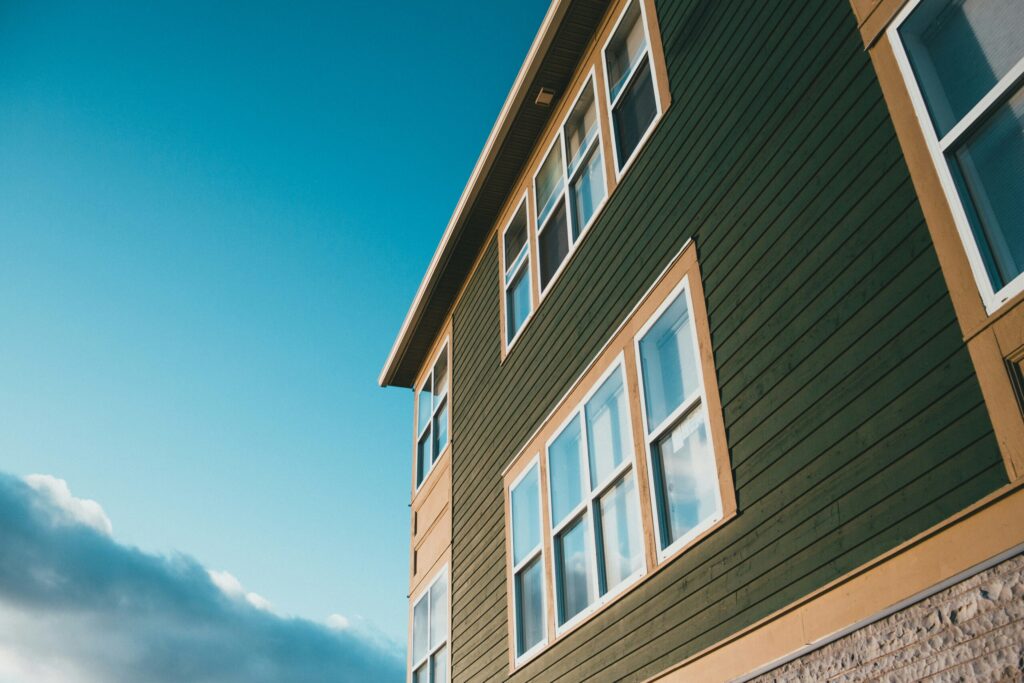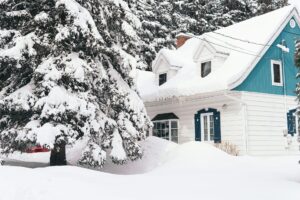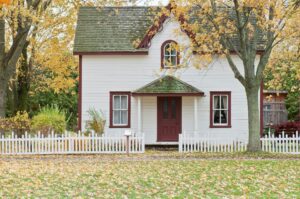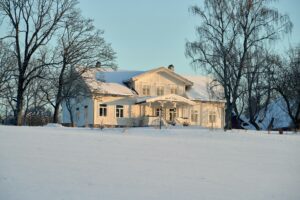Vancouver, Washington stands at the intersection of urban growth and rugged natural beauty. Its proximity to the Columbia Gorge means residents enjoy stunning vistas, and face frequent wind gusts and heavy rains. If your home sits in this unique microclimate, proper siding is vital to shielding your property from moisture intrusion and wind damage.
Siding plays a central role in maintaining a comfortable, energy-efficient home. Beyond aesthetics, it protects the underlying structure from the forces of nature. Investing in the right siding pays off in fewer repairs, better energy savings, and enhanced home value. If you’re seeking tailored guidance, HOMEMASTERS offers expert consultation to help you weigh all the factors.
Columbia Gorge Weather Patterns and Your Home
The Columbia River Gorge brings a convergence of air currents year-round, generating strong winds that often exceed typical speeds in Western Washington. According to [NOAA’s wind statistics](https://www.noaa.gov) for the region, gusts can regularly reach 30 to 40 mph, with occasional surges far beyond that. Combined with the Pacific Northwest’s months of drizzly rain, these powerful winds and near-constant moisture demand a resilient exterior system.
Vancouver’s weather can shift abruptly, too. One moment you might enjoy a mild, damp breeze; the next, you’ll brace for a sharp, gusty blow. Over time, sustained wind-driven rain can infiltrate inadequately sealed siding, causing rot or mold in hidden cracks. Properly installed siding keeps out moisture, prevents drafty areas inside, and supports a healthier indoor environment.
Comparing Siding Materials for Wind Resistance
High wind conditions test the durability of any siding choice. Even the most visually appealing siding won’t serve you if it peels away in the first storm. Here’s how various materials stack up:
Fiber Cement:
Brands like [James Hardie](https://www.jameshardie.com) have engineered fiber cement products that boast strong impact resistance and minimal movement under wind pressure. The boards are heavier than vinyl, so they’re less likely to flex or crack.
Vinyl Siding:
Modern vinyl products include higher wind ratings, some tested to withstand gusts surpassing 100 mph. However, cheaper or older vinyl can warp or detach if not firmly fastened. Proper installation is critical.
Wood and Composite Options:
Traditional wood can resist moderate winds if carefully maintained. Yet it’s prone to warping when saturated, making it less reliable in gusty, moisture-rich conditions unless thoroughly sealed. Composite boards often combine fibrous materials with synthetic resins, improving dimensional stability.
Metal Siding:
Aluminum or steel siding holds up well against wind-blown debris, though it can dent on impact. Steel is heavier, offering a sturdier shield, but it may be more expensive. Proper fastening ensures metal panels stay securely in place.
Choosing between these materials involves balancing aesthetic goals and long-term defense. For example, fiber cement may look closer to traditional wood while delivering a high level of wind protection. Meanwhile, vinyl’s lighter weight can keep upfront costs modest.
Moisture Management in the Pacific Northwest
The Pacific Northwest is known for its drizzly climate, and Vancouver sits right in the middle of that moisture belt. Rain, fog, and misty conditions can linger for weeks, making siding installation and material choice paramount. The right system can channel water away and deter mold or mildew.
Water-Resistant Barriers:
Even top-tier siding isn’t enough if water collects beneath it. Installing a water-resistant barrier (WRB) or house wrap provides a critical safeguard against leaks.
Adequate Ventilation:
Moisture must have a route to escape. Certain siding profiles allow small gaps or ventilation channels that keep the home’s exterior dry.
Seam Sealing:
Caulking and flashing details around windows, doors, and corners ensure water can’t seep into the framing. These small finishing steps are as critical as the siding boards themselves.
Selecting siding with good moisture-shedding capabilities saves you from rot or fungus damage, especially in areas battered by relentless rain. Taking extra steps like adding a drainage plane behind your siding offers extra insurance.
Signs Your Siding Needs Attention Before Winter
Even premium siding has a lifespan, and Vancouver’s wind-whipped rain will test any surface. A quick visual inspection now can save headaches later. Look for:
– Cracking or Warping: Extreme changes in wind and temperature cause siding boards to expand, contract, or crack. If you spot severe distortion, it’s a sign of deeper issues.
– Peeling Paint or Blistering: Particularly in wood or fiber cement siding, paint that peels or blisters often points to trapped moisture.
– Gaps and Loose Panels: Wind can tug siding loose over time. Missing nails, shifting planks, or rattling vinyl pieces are good indicators of a compromised system.
– Higher Energy Bills: If you’re suddenly noticing drafts or rising utility costs, damaged siding may not be insulating your home properly.
Scheduling a professional condition assessment in the fall ensures you’ll fix any vulnerabilities before the heavier winter storms roll in. For personalized guidance, HOMEMASTERS can help you explore pragmatic repair or replacement strategies that protect your home through the wettest months.
Maintenance Requirements by Material Type
Routine care keeps your siding in peak condition, particularly under Vancouver’s challenging weather. Although each product has different upkeep demands, all benefit from a yearly once-over:
– Fiber Cement: Usually requires checking caulking along joints and refreshing paint every five to 10 years. A simple gentle wash removes debris.
– Vinyl Siding: Typically low-maintenance, it only needs a wash with mild soap and water once or twice a year. Inspect for cracks or loose pieces, especially after windy days.
– Wood: Must be sealed, stained, or painted regularly to shield it from moisture. Annual inspections detect any rotting or bug infestations quickly.
– Metal Siding: Occasional washing plus a watchful eye for dents or scratches will maintain integrity. Corrosion is possible but generally minimal with proper coating.
Performing these tasks helps you catch early warning signs of trouble and preserve your siding’s appearance. Vancouver’s wind and rain can be harsh, but consistent care bolsters your home’s defenses.
## Color Selection for Pacific Northwest Homes
The Pacific Northwest’s natural palette of evergreens, misty blues, and earthy browns can guide your siding color choice. A harmonious blend with the landscape enhances curb appeal and hints at the region’s ecological beauty.
– Earthy Tones: Warm browns, soft grays, and gentle greens complement nature’s backdrop. They also mask dirt splatter more effectively, a helpful perk given the frequent drizzle.
– Cool Blues and Grays: Cool, neutral tones mirror the often-overcast skies. This subdued approach creates a clean look that stays stylish for years.
– High-Contrast Accents: Black trim or bold shutter colors add visual interest without losing the Northwest’s understated charm.
Because Vancouver’s skies are often cloudy, picking a siding color with some brightness can prevent your home from feeling dreary. Also check fade resistance, as UV rays piercing through your cloudy climate can still age exterior finishes over time.
Installation Considerations for Gorge Winds
Intense gusts aren’t just a matter of robust materials, they also demand strong installation techniques. A well-engineered siding project in Vancouver includes:
– Proper Fastening: Nails or screws must be embedded to the correct depth, avoiding overtightening that could crack or over-stress boards. Spacing guidelines vary by product.
– Reinforced Corners: Corners are particularly susceptible to wind-driven rain. Reinforcement layers such as corner caps, metal flashing, and extra caulking prevent leaks.
– Tight Seams: Overlapping seams with recommended clearances ensures wind and water have fewer entry points. Details like butt joints and trim boards matter a great deal in windy conditions.
– Professional Expertise: Even the best DIY strategy can falter if you haven’t navigated a high-wind scenario before. Vancouver’s microclimates demand careful planning.
When you factor in wind speeds often surpassing standard specs, critical best practices become non-negotiable. That’s why working alongside a specialized contractor like HOMEMASTERS can save you from costly mistakes.
## Energy Efficiency and Insulation Options
Proper siding doesn’t just protect against weather, it can also lower utility bills. In Vancouver, where winter temperatures can drop quickly and dampness complicates heat retention, insulated siding or an additional insulation layer provides dependable comfort.
– Foam-Backed Vinyl: Some vinyl products have integrated foam insulation, giving a modest R-value boost. These can reduce energy loss without significantly increasing siding weight.
– Rigid Foam Panels: Installing rigid foam boards behind the siding serves as a thermal break, preventing cold air from seeping into the studs. This technique works well under fiber cement or wood siding.
– Reflective Barriers: Certain metal sidings use reflective coatings to redirect heat. Though not as common, these coatings can offer incremental improvements in energy efficiency.
Beyond cost savings, insulated siding supports consistent indoor temperatures and reduces condensation risks behind the walls. If you’re exploring your options, consult an expert on how best to combine insulation and siding upgrades for maximum benefit.
Cost Comparison and Longevity
Assessing the total “value” of a siding job goes beyond just the purchase price. In Vancouver’s turbulent climate, durability, warranty, and maintenance costs can shift the equation:
– Initial Costs: Vinyl and some metal sidings tend to run cheaper upfront, while premium fiber cement and composite materials come at higher starting prices.
– Maintenance Over Time: Wood siding requires regular sealing or painting, driving up perpetual costs. In contrast, vinyl, fiber cement, or metal often demand less frequent upkeep.
– Lifespan: Quality fiber cement siding might last 30 to 50 years with appropriate care. Metal siding can last just as long if protected from corrosion. Vinyl can deliver multiple decades of service, although it may be more prone to damage from flying debris.
– Resale Value: Potential homebuyers in Vancouver are often drawn to durable siding, mindful of the region’s challenging conditions. A robust exterior can increase property appeal.
By exploring your options with a holistic approach, you make a smart investment that suits your household’s needs. It’s prudent to weigh smaller, ongoing expenses against bigger upfront costs, especially if you plan on staying in your home for many years.
When to Replace vs. Repair
It’s natural to wonder whether you can nurse an aging siding system through a few more winters instead of jumping into a full replacement. In many cases, repairs may buy you time, but repeated fixes add up. Signs that it’s time to consider an upgrade include:
– Widespread Damage: A few boards can be fixed, but if entire walls exhibit cracks, warping, or moisture intrusion, a complete replacement is often more cost-effective.
– Visible Rot or Mold: If interior studs or sheathing show signs of rot, repeated spot-fixes might only delay the inevitable. Damp climates accelerate structural issues once they take hold.
– Energy Inefficiency: Persistent drafts or skyrocketing utility bills signal that the existing siding no longer performs. Upgrading to an insulated option can yield long-term savings.
– Extensive Color Fading or Chalking: Siding that constantly looks dull or dusty, despite regular cleaning, may be nearing the end of its lifespan.
If you’re on the fence, consider scheduling an inspection with a professional Siding contractor like HOMEMASTERS. They can pinpoint whether a targeted repair might hold you over or if a complete replacement makes more sense in the long run.
Conclusion
Vancouver’s position by the Columbia Gorge demands siding that stands up to gusting winds, persistent rain, and fluctuating temperatures. Each material, fiber cement, vinyl, wood, and metal, has its unique mix of advantages, from wind resistance to built-in insulation. Success comes not just from picking a premium product, but ensuring every installation detail is handled with care.
If you spot warning signs like warping, cracks, or rot, prompt attention can spare you from spiraling damage. Likewise, choosing a color palette that complements local surroundings creates lasting curb appeal. And by factoring in upgrades like foam backing or robust drainage systems, you’ll optimize both energy efficiency and long-term performance.
Whether you’re refreshing an older home or building new, the right siding strategy is your front line against the elements. For tailored insights, connect with the specialized team at HOMEMASTERS. With local expertise and a deep understanding of Vancouver’s weather, they’ll guide you to a siding solution that fends off the Gorge’s challenges year after year, leaving you with a home as resilient as it is beautiful.




